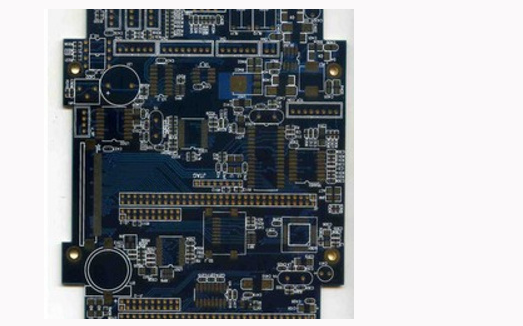Causes and solutions of PCB developing impurity
Osmosis plating: the so called osmosis plating, that is, due to the dry film and copper foil plate surface bonding is not firm, so that the plating solution depth, and the "negative phase" part of the coating thicker and good tin lead corrosion resistance layer, to etching problems. It is easy to cause the scrap of printed circuit board, which is the key point to pay special attention to in production. In the process of graphic electroplating, the causes of infiltration and plating are analyzed as follows:

(1) Poor dry film development, extended use. The photoresist dry film has been mentioned above, and its structure consists of three parts: polyester film, photoresist film and polyethylene protective film. Under ultraviolet light, the dry film and the surface of copper foil produce good adhesion, play the role of anti-electroplating and anti-etching. A number of films over t
he validity period of use, this layer of binder will fail, in the film after the plating process clip loss of protection, the formation of osmotic plating. The solution is to carefully check the effective service cycle of dry film before use.
(2) The influence of temperature and humidity on the film: different dry films have more appropriate film temperature. If the film temperature is too low, due to the corrosion resistance film can not get sufficient softening and appropriate flow, resulting in poor adhesion between dry film and copper clad laminate surface; If the temperature is too high due to the rapid volatilization of solvent and other volatile substances in the resist and produce bubbles, and the dry film becomes brittle and not resistant to electroplating to form warping peel, resulting in plating and scrap. The current use of Wuxi DFP and duPont 3000 dry film, the general control of film temperature is 70-900C.
The water - fusible dry film is used, and the humidity in the air has a great influence on it. When the humidity is higher, the dry film binder can achieve good bonding effect when the film temperature is lower. Especially in the south, the summer temperature is high, from long-term practice to explore a better set of temperature control parameters, 20-250C, relative humidity more than 75%, the film temperature is lower than 730C better; When the relative humidity is 60-70%, the film temperature is 70-800C. When the relative humidity is below 60%, the film temperature is higher than 800C. Also increase the pressure and temperature of the film cots, also achieved good results.
(3) Too long exposure time or insufficient exposure: under ultraviolet light, the absorption of the light energy of the photoinitiator decomposition into free radicals to initiate the monomer photopolymerization reaction, the formation of insoluble alkali solution of the size of the molecule. For each dry film to be effective, there must be an exposure. According to the definition formula of light energy, the total exposure E is the product of light intensity I and exposure time T. If the light intensity I is constant, the exposure time T is an important factor directly affecting the total exposure. When the exposure is insufficient, due to incomplete polymerization, in the developing process, the film swelling becomes soft, resulting in unclear lines and even the film layer falls off, resulting in poor combination of the film and copper; If the exposure is excessive, it will cause difficulty in developing, and it will also produce warping and stripping in the plating process, forming infiltration plating. Therefore, the solution to the process measures is to strictly control the exposure time, each type of dry film should be measured according to the process requirements when starting. If the use of Swidden 21 class optical wedge table, the difference of 0.15, to control 6-9 is appropriate.
(4) poor development: after the exposure of the copper clad foil laminate with good dry film, it must also be developed by the developer, and the unexposed dry film remains the original composition, and the following reactions occur with the developer in the developer: -COOH+Na+ - -Coona +H+
Among them, -Coona is a hydrophilic gene, soluble in water, stripped from the dry film, so that the whole surface of the plate is exposed to electroplating graphics, and then electroplating. -coona is the dry film component, Na+ is the main component of developing solution, (Na2CO33 % plus appropriate amount of defoaming agent). If the development is not accurate, the graphic wire part of excess glue will cause local copper plating, the formation of waste defective products, which is prone to quality problems in the development section.
(5) Exposure time is too long. When overexposed, ultraviolet light through the transparent part on photographic plate and create refraction, diffraction phenomenon, exposure to the photographic plate under the opaque parts of dry film, make originally should not happen light polymerization dry film of this part, was part of polymerization reaction occurred after exposure, development will generate more glue and line carefully. Therefore, proper control of exposure time is an important condition to control the development effect.